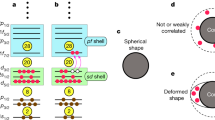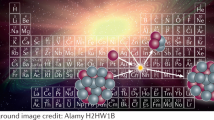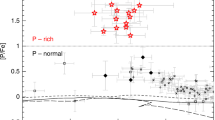Abstract
(3). Apart from the stars of the main sequence, there is known a large class of stars having very high luminosities but possessing much lower effective temperatures (that is, much greater radii) than the stars of the main sequence of the same luminosities. In the Hertzsprung-Russell diagram these so-called red giants form a rather irregularly distributed group on the upper right side of the main sequence. Because of anomalously large radii these red giants possess very low densities, and the estimated central temperatures are considerably lower than those for the stars of the main sequence (for typical red giants the central densities can be as low as 5 × 10-7 gm./cm.3, and central temperatures less than 1 × 104°C.). Thus it is clear at once that the energy production in these stars cannot be due to the same nuclear reaction as in the stars of the main sequence, and we have to look for reactions taking place at an appreciable rate at much lower temperatures than the carbon-nitrogen cycle. From Table I [p. 575] we see that the nuclei which can be responsible for the energy production at lower temperatures are the isotopes of heavy hydrogen, lithium, beryllium and boron, and, using the data of this table together with formula (1), it is easy to estimate at which temperatures these different processes will be of importance. Then, using the homology transformations, we can calculate the location of stars with different energy-producing reactions in the Hertzsprung–Russell diagram8.
This is a preview of subscription content, access via your institution
Access options
Subscribe to this journal
Receive 51 print issues and online access
$199.00 per year
only $3.90 per issue
Buy this article
- Purchase on Springer Link
- Instant access to full article PDF
Prices may be subject to local taxes which are calculated during checkout
Similar content being viewed by others
References
Gamow, G., and Teller, E., Phys. Rev., 55, 791 (1939).
Chandrasekhar, S., “Stellar Structureâ (Chicago Univ. Press, 1939).
Gamow, G., Phys. Rev., 55, 796 (1939).
Chandrasekhar, S., Mon. Not. Roy. Ast. Soc., 91, 456 (1931) and following publications.
Baade, W., and Zeicky, F., Proc. Nat. Acad. Sci., 20, 259 (1934).
Author information
Authors and Affiliations
Rights and permissions
About this article
Cite this article
GAMOW, G. Nuclear Reactions in Stellar Evolution*. Nature 144, 620–622 (1939). https://doi.org/10.1038/144620a0
Issue Date:
DOI: https://doi.org/10.1038/144620a0
This article is cited by
-
The Evolution of the Stars
Nature (1939)
Comments
By submitting a comment you agree to abide by our Terms and Community Guidelines. If you find something abusive or that does not comply with our terms or guidelines please flag it as inappropriate.



